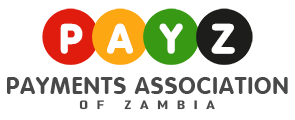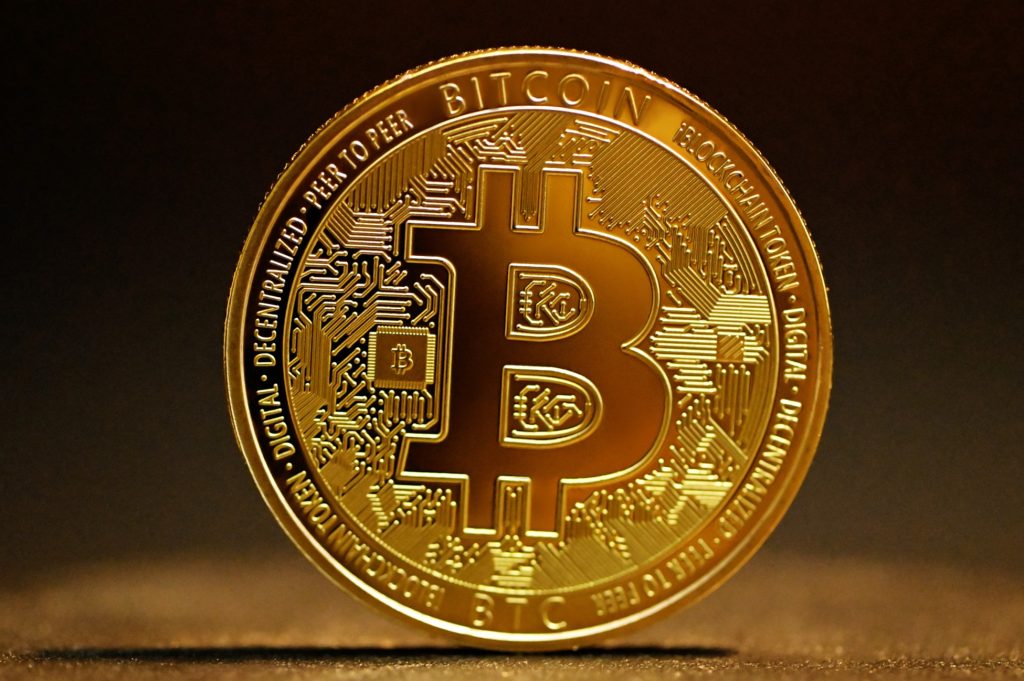Author: Jeffrey Stewart
Three Dimensions Of Regulation
So how do we predict the direction of crypto regulation, given that it is being built on a shaky conceptual foundation of financial assets? 31 Crypto regulation continues to evolve but appears to be developing along three related dimensions that we can explore in turn:
● The nature of the crypto object itself;
● The financial and social risks being addressed by the regulatory effort;
● The activity being undertaken by the player in the crypto space.
The Nature Of The Crypto Object
The discussion above hints that crypto objects are more accurately and helpfully understood by their purpose rather than being uncomfortably pigeonholed as a class of financial asset. The uses and functions of various crypto tokens introduce varying risks to individuals, corporates, and financial infrastructures and are accordingly serving as a basis for distinction in regulatory regimes. 32 Categories of crypto objects vary across sources and tend to bleed into one another, but typically include:
● Unbacked digital currencies: Native tokens, like Bitcoin, that are issued and exist on a distributed ledger, usually a blockchain. 33 These are sometimes categorized as “payment tokens”. Indeed originally, these tokens were intended for payment purposes 34 but, because unbacked cryptocurrencies don’t behave as money or currency (see above) except in their own ecosystems, they essentially become speculative assets driven by supply and demand. 35 This has led some to recommend regulating the crypto space in a manner similar to gambling. 36
● Asset-backed tokens represent the opposite case and include two main subclasses:
○ Stablecoins, sometimes called asset-referencing tokens (ARTs) when applied to multiple assets are pegged to fiat currencies (usually USD) by either holding assets – combinations of fiat money, securities, and other cryptocurrencies – or through algorithmic stabilization measures that balance supply and demand by buying and selling other cryptocurrencies. Backing with fiat-based currencies and securities requires careful auditing and evaluation to confirm adequate collateral. 37 Algorithmic stabilization works…except when it doesn’t. 38 The stablecoin’s purported raison d’etre is to
maintain stable value while harnessing the benefits of distributed ledgers, but critics contend that stablecoins are increasingly becoming an unstable source of liquidity for decentralized trading and lending. 39
○ Security tokens are “tokenized”, or “dematerialized” versions of real-world assets such as stocks. They may either be issued natively and exist only on a blockchain or alternatively, their real-world doppelganger must be held in custody while the proxy token exists. New ideas such as the Regulated Liability Network (RLN) 40 and the BIS’ nascent “unified programmable ledger” 41 build on this
concept to represent balance-sheet liabilities – like bank deposits and trade invoices – on a blockchain. Non-fungible tokens (NFTs) point to non-financial digital assets such as artwork, and unlike other “fungible” tokens such as Bitcoin, are not interchangeable. 42
● Utility tokens: allow access to a service and often double as a means of settlement within an ecosystem. The Ripple XRP token is an example of a utility coin used for interbank settlement across borders. Ether facilitates the completion of smart contracts and pays “gas” charges for processing on Ethereum blockchains while also remaining an unbacked digital currency that can be bought and sold on exchanges. Governance tokens, initial coin offerings (ICOs) etc also authorize the bearer or give rights over activities such as blockchain governance.
There are many theoretical advantages to keeping track of things on a distributed ledger technology (DLT), like a blockchain. They include 24/7 always-on functionality, instant “atomic” (all or nothing) settlement, “composable” programmability, 43 arbitrary granularity (can be almost endlessly subdivided), and operational resilience across many distributed nodes. These benefits can even be extended across disparate ledgers through technologies like hashed timelock contracts (HTLCs). 44 The regulatory task is to harness the benefits associated with DLT for each type of token while curtailing the attendant financial and social risk.
Financial And Public Risk
The second broad dimension of crypt regulation pertains to the financial risk imposed by crypto assets. The traditional financial industry is typically regulated in an effort to control risk in four key areas:
● Financial stability – the ability to allow money and credit markets to continue operating via resilient institutions and infrastructures;
● Financial efficiency – the standards, rules, and procedures that allow money and credit to flow smoothly and reduce credit and liquidity risks that hinder system performance;
● Public safety – monitoring and minimizing the use of the financial system for crime, money laundering, terrorist financing, tax evasion, and other antisocial purposes;
● Consumer protection – ensuring that consumers have accurate information to judge risks in financial activities and are not financially exploited.
Regulators’ and global standards-setters (GSS) efforts to extend financial system protections to
crypto assets can be analyzed through the lens of this categorization:
Financial Stability
Financial stability is becoming an increasing area of concern as banks and other regulated financial institutions increase their exposure to both unbacked crypto assets, stablecoins, and tokenized assets and liabilities. This risk of financial contagion has been brought to the fore by recent high-profile failures of stablecoin arrangements, 45 crypto lenders 46, and exchanges, most saliently the FTX trading platform and its speculative arm – Alameda Research 47 and its contribution to the “crypto winter”. 48
Accordingly, regulators around the world are crafting prudential oversight and corporate governance rules and orderly unwinding requirements for crypto players in their purview. Globally, the Financial Stability Board (FSB), 49 the BIS Committee on Payments Market Infrastructures – International Organizations of Securities Commissions (CPMI-IOSCO) 50 and the BaselCommittee for Bank Supervision (BCBS) 51 are leading the international charge to standardize regulatory approaches in this space.
Financial Market Efficiency
Likewise, crypto market efficiency is coming under increasing regulatory scrutiny. A variety of
intermediaries and algorithmic protocols have emerged that trading efficiency against risk in order to meet users’ needs. For example, the native throughput (transactions per second or “TPS”) of blockchain systems like Bitcoin and Ethereum is a bottleneck, so “layer 2” protocols like the
Lightning Network 52 has emerged to aggregate, clear, and settle transactions in batches. Exchanges, traders, and algorithmic Automated Market Makers (AMMs) also serve the purpose of clearing and settling transactions between cryptocurrency pairs. 53
These processes clearly improve the efficiency of crypto transactions; but where there is efficiency, there tends to be a combination of centralization, aggregation, and delayed settlement, which introduces risk. AMMs, which underlie algorithmic stablecoins, are decentralized but can run off the rails in a spectacular automated fashion in stressed market conditions 54 and are also subject to manipulation by liquidity providers and miners. 55 Accordingly, global standards setters 56 contend that crypto-clearing infrastructure should face risk-based oversight and, where possible, abide by the Principles for Financial Market Infrastructures applied to traditional financial structures. 57
Public Safety
Public Safety has of course been a concern for regulators since the early days of Bitcoin. Cryptocurrencies allow transactions to be submitted by whoever holds the cryptographic “keys” just as whoever holds cash can spend it. Hence, cryptocurrencies have filled a “pseudo-anonymous” 58 remote-payment gap that neither cash nor electronic payments properly inhabit, making cryptocurrencies a magnet for criminal activity. 59
Accordingly, many jurisdictions have imposed Know-Your-Client (KYC) and anti-money laundering (AMLs) regulations on chokepoints in and out of the world of crypto; namely exchanges, brokers, and wallet providers. This muscular law enforcement has forced true anonymity to more arcane protocols like Monero and Zcash. 60
In the global space, work by the G7-launched Financial Action Task Force (FATF) provides risk-based assessment guidance for traditional banks and financial institutions in combating crime, money laundering, and terrorist financing. It has further extended these guidelines to activities involving virtual assets and their service providers. 61 Among other recommendations is the “travel rule” requiring intermediaries to share personally-identifying information (PII) for transactions above 1000 USD or EUR. At a jurisdictional level, entities such as the US Financial Crimes Enforcement Network (FinCEN) 62 and the UK’s Financial Conduct Authority (FCA) 63 drive regulation and enforcement in the realm of public safety.
Consumer Protection
Consumer protection is at the heart of much regulatory activity. Consumer risk is driven by many factors including cyber-security protocols and the operational and business resilience of issuers, exchanges, and other intermediaries. These risks are exacerbated by the opacity of the crypto offering itself and the market’s ability to ascertain its true scarcity and value. A particular risk is
introduced through the intermingling of duties – and customer funds – by exchanges and other
intermediaries, often resulting in unauthorized leveraged speculation. 64
Regulatory efforts in this area focus on Investor and consumer protection and market conduct regulations that seek to align information about crypto offerings with that required of other financial securities and products. For example, many jurisdictions are pursuing requirements that crypto issuers produce white papers describing their business models, technology, and issuance plans. Furthermore, issuers and service providers, such as hosted wallets should clearly lay out rights obligations, and recourse in legally enforceable service contracts and provide regular statements and notifications. 65
References
31 E.g. Patrick McConnell (LinkedIn): Are regulators completely confused about cryptoassets? Feb 2023
32 See e.g. Financial Stability Board (FSB): Regulation, Supervision and Oversight of Crypto-Asset Activities and Markets: Consultative document. Annex 3. Oct 2022
33 Analytic Steps: 5 Types of Distributed Ledger Technologies (DLT) | Analytics Steps. Apr 2022
34 Satoshi Nakamoto: Bitcoin: A Peer-to-Peer Electronic Cash System. Oct 2008
35 Bank for International Settlements (BIS): BIS Working Papers – No 1049 Crypto trading and Bitcoin prices: evidence from a new database of retail adoption. Nov 2022
36 CLS Blue Sky Blog: Let’s Stop Treating Crypto Trading as If It Were Finance | CLS Blue Sky Blog. Nov 2022
37 Forbes: Stablecoin Failures Highlight The Need For Crypto Audit Standards. May 2022
38 Investopedia: TerraUSD Crash Shows Risks of Algorithmic Stablecoins. May 2022
39 ECB: Stablecoins’ role in crypto and beyond: functions, risks and policy. July 2022
40 The Regulated Liability Network (RLN):The-Regulated-Liability-Network-Whitepaper.pdf. Nov 2022.
41 BIS: Innovation and the future of the monetary system. Speech by Mr. Agustín Carstens, General Manager of the BIS, Singapore. Feb 2023
42 Worldcoin.org: A Beginner-Friendly Guide to Fungible vs. Non-Fungible Tokens | Worldcoin
43 See e.g. Ethereum.org: Smart contract composability | ethereum.org. Accessed Jan 2023
44 E.g. Corporate Finance Institute: Hashed Timelock Contract (HTLC). Jan 2023
45 Investopedia: TerraUSD Crash Shows Risks of Algorithmic Stablecoins. May 2022
46 Forbes: Celsius Crypto Meltdown: A Crypto Lender In Crisis. Oct 2022
47 Investopedia: The Collapse of FTX: What Went Wrong with the Crypto Exchange? Jan 2023
48 Investopedia: Which Companies Are Exposed to FTX?. Nov 2022
49 Financial Stability Board (FSB): Regulation, Supervision and Oversight of Crypto-Asset Activities and Markets: Consultative document. Oct 2022
50 BIS-Committee on Payments and Market Infrastructures (CPMI): Application of the Principles for Financial Market Infrastructures to stablecoin arrangements. July 2022
51 Basel Committee for Bank Supervision (BCBS): Second consultation on the prudential treatment of crypto asset exposures June 2022
52 See e.g. Investopedia: Lightning Network Explained: What It Is and How It Works. July 2022
53 BIS: Trading in the DeFi era: automated market-maker. Dec 2021
54 E.g. Forbes: From Hero To Zero: How Terra Was Toppled In Crypto’s Darkest Hour. May 2022
55 BIS: Trading in the DeFi era: automated market-maker. Dec 2021
56 E.g. IMF: Regulating the Crypto Ecosystem: The Case of Unbacked Crypto Assets. Sept 2022
57 BIS-CPMI: Application of the Principles for Financial Market Infrastructures to stablecoin arrangements. July 2022
58 See e.g. Time: How Investigators Are Tracing Crypto Criminals | Time. Dec 2022
59 See e.g. Wall Street Journal: Cryptocurrency-Based Crime Hit a Record $14 Billion in 2021 – WSJ. Jan 2022
60 E.g. Coindesk: What Are Privacy Coins and Are They Legal?. Aug 2022
61 Financial Action Task Force (FATF): Updated Guidance for a Risk-Based Approach to Virtual Assets and Virtual Asset Service Providers. Oct 2021
62 Financial Crimes Enforcement Network (FinCEN): FinCEN Guidance, FIN-2019-G001, May 9, 2019
63 Gov UK: Factsheet: cryptoassets technical – GOV.UK. Jan 2023
64 E.g. New York Dept of Financial Services: Industry Letter – January 23, 2023: Guidance on Custodial Structures for Customer Protection in the Event of Insolvency | Department of Financial Services. Jan 2023
65 E.g. International Organizations of Securities Commissions (IOSCO): IOSCO Crypto-Asset Roadmap for 2022-2023. July 2022






